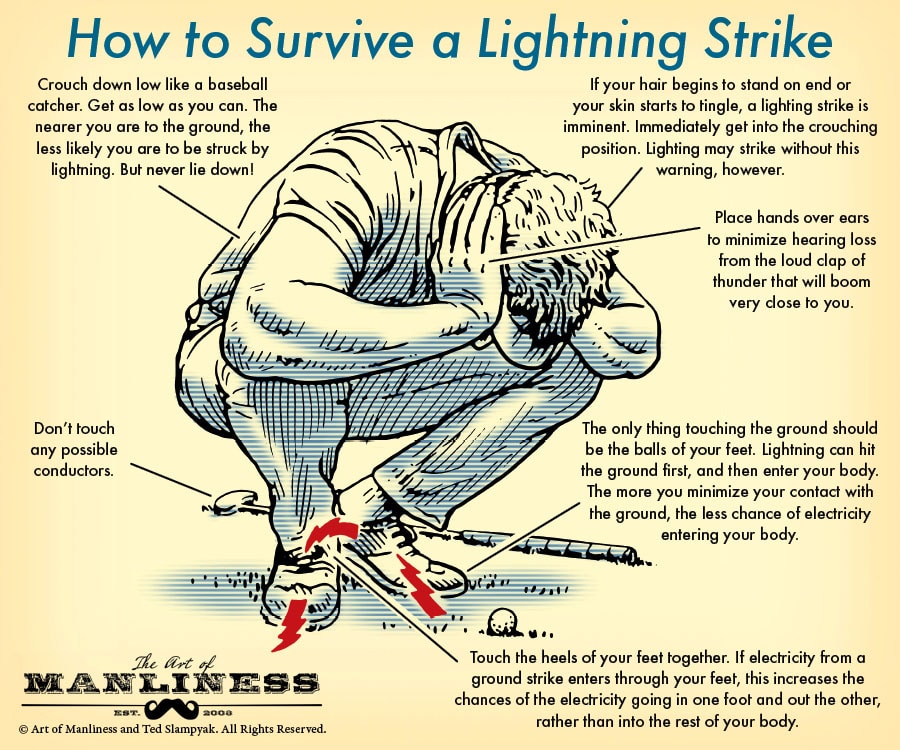
The best way to survive a lightning strike is to avoid being outdoors in the first place. Use the 30/30 Rule: If, after seeing lightning, you can’t count to 30 before hearing thunder, get inside a building or car. Don’t go outside until 30 minutes after the last clap of thunder.
If you’re caught outdoors and can’t take cover during a lightning storm, seek shelter in a low area under a dense growth of small trees (don’t stand too close to them, though). Avoid tall, isolated objects like tall trees and flagpoles, since lightning often (but not always) tends to strike the tallest object in an area.
If you’re in an open area, go to a low area, like a valley or a ravine (but be alert for flash floods). In all cases, avoid any size body of water, as water is a conductor of electricity.
If you’re caught outdoors and see signs that a lightning strike is imminent (your hair stands on end, your skin tingles, you hear a buzzing, clicking, hissing, or cracking sound, or see metal objects emitting a soft, blue-white glow) or you simply think you’re in danger, immediately assume the position above to increase your chances of surviving, should the lightning strike you directly, or close to you.
– Crouch down low like a baseball catcher. Get as low as you can. The nearer you are to the ground, the less likely you are to be struck by lightning. But never lie down!
– If your hair begins to stand on end or your skin starts to tingle, a lighting strike is imminent. Immediately get into the crouching position. Lighting may strike without this warning, however.
– Place hands over ears to minimize hearing loss from the loud clap of thunder that will boom very close to you.
– Don’t touch any possible conductors.
– The only thing touching the ground should be the balls of your feet. Lightning can hit the ground first, and then enter your body. The more you minimize your contact with the ground, the less chance of electricity entering your body.
– Touch the heels of your feet together. If electricity from a ground strike enters your feet, this increases the chances of the electricity going in one foot and out the other, rather than into the rest of your body.
Like this illustrated guide? Then you’re going to love our book The Illustrated Art of Manliness! Pick up a copy on Amazon.
Illustration by Ted Slampyak


